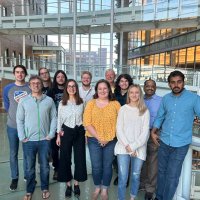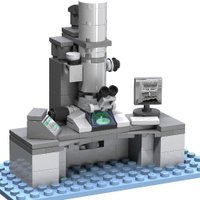
Drew Howard
@drewhow66
Grad student, Structural biologist /@CSHL Cryo-EM alum 🔬/ TGF-Beta family & Anti-Müllerian Hormone
ID: 399716355
http://tomthompsonlab.com 27-10-2011 22:50:37
22 Tweet
103 Followers
419 Following

Excited to share the work of Kaitlin Hart, a graduate student in our lab, who worked to solve the novel binary structure of Anti-Müllerian hormone (AMH) bound to type II Ser/Thr kinase receptor, AMHR2. pnas.org/content/118/26….

Check out our new 3D protein display featuring structures solved by Seegar Lab, Rhett Kovall Lab, and us Tom Thompson Lab!! Thank you to the U of Cincinnati Engineering and Applied Science digital fabrication lab for making this collaboration possible.






Two decades ago Avigdor Eldar & Barkai Lab introduced concept of shuttling, in which protein circuits push morphogens away from their source, or smush them into narrower regions. We have now reconstituted shuttling in mammalian cell culture: science.org/doi/10.1126/sc….





We are thrilled to share our latest preprint on the Anti-Müllerian Hormone and its unique signaling pathway. Our first ever cryo-EM structure represents a breakthrough over 40 years in the making. 🧬🔍 (Drew Howard) Check out our findings here: biorxiv.org/content/10.110… 1/10



Last chance to apply to the Cold Spring Harbor #cryoem course this March (application deadline is Jan 15th)! Learn all about sample prep, microscope operation, and image processing at this fun 2-week course kollman lab Jennifer Cash CSHL Courses meetings.cshl.edu/courses.aspx?c…


